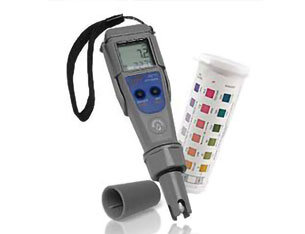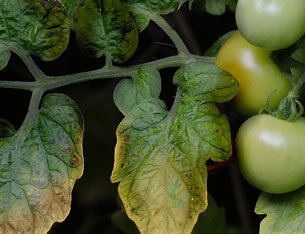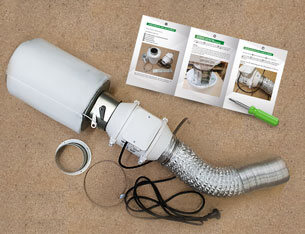The pH value is a big mystery for many beginners and marks the border to professional growing for many. But let's be honest: it's not that complicated. Besides, a correctly adjusted pH value can improve your results in the grow box considerably, so there is no reason to leave this topic to the professionals!
pH value: What is it actually?
Let's quickly start with the basics: The pH value indicates how acidic or basic a liquid is, in this case of course we are talking about a nutrient solution for plants. The pH value is very important for the roots! If the pH value is not right, the roots will continue to absorb water, but no more nutrients.
A small example: If the pH value is below 5.5, the plants absorb very little phosphorus. No matter how much pure phosphorus you add to your nutrient solution: If the pH value is too low, it is simply not absorbed any more, even if there would actually be more than enough. So the plant is practically swimming in phosphorus and still shows you a clear deficiency.
Second example, this time in the other direction: If the pH rises above 7.5, the roots can hardly absorb iron and manganese, even if there would be enough.
In other words: the pH value is the bouncer at the root, so to speak. The optimal value is between 5.8-6.2. Then the bouncer is in a good mood and lets everyone in, no matter whether it is nitrogen, phosphorus or zinc. It only gets stupid when the bouncer goes sour. Then not everyone is allowed in, even if there is a big crowd. It's exactly the same when the shift goes on too long and the bouncer has eaten too many pretzels, making him too alkaline: Zack, the root door is closed, "You're not getting in here!"
So the pH value is not witchcraft, but very easy to understand! HERE you will find a short overview, which should clear up any further questions.
Measuring pH with a meter: What do you have to bear in mind?
pH meters are extremely user-friendly and very reliable, especially since you can easily recalibrate them yourself. A decent pH meter starts at 50€, you should not spend much less. A pH meter has an electrode that must always be kept wet. Therefore, the electrodes have an extra cap which is filled with liquid. So please always open it carefully and don't spill it, the liquid for this is relatively expensive, usually you only get a 10ml bottle for free. This electrode also measures the pH value. If it dries out, you have to buy a new one! So please check regularly if there is still enough liquid in the cap.
 Calibrate the pH meter
Calibrate the pH meter
With a decent meter you always have two calibration solutions with which you can calibrate the pH meter, pH 4 and pH 7. The calibration itself is very simple and is described in detail in the description of each meter. The ADWA AD11 pH meter, for example, is very quick and easy to calibrate: Switch on the device and hold down the ON/OFF/MODE button until the message pH 7.01 USE appears. Then immerse it in the calibration solution for pH7 and the message REC appears until the unit has calibrated itself and displays the value pH 7.01 and OK1. Then the message pH 4.01 USE appears and you repeat the procedure with calibration solution for pH4 until pH 4.01 and OK2 is displayed.
When to measure?
The pH value of nutrient solutions often drops in the first 24 hours. Therefore, it is very useful to let the nutrient solution stand for a day after mixing and only then measure the pH value. If you measure the pH value too early and immediately add acid to lower the pH value, it will usually be too low after 24 hours and you can immediately add lye again. Save yourself this back and forth, just wait a day and that's it!
Changing the pH value: As easy as it seems?
Yes, in fact it is quite easy these days! Almost every fertiliser manufacturer has a "pH-Minus" and "pH-Plus" on offer, and it is clear what these substances do... Please pay close attention to the instructions and take care of your paws, acid and skin don't get along so well. In the past, growers had to work with hydrogen peroxide, nowadays there are fortunately these complete solutions from the manufacturers. As mentioned above, you should not measure and correct the pH value immediately after mixing, but only after about 24 hours. Important: The nutrient solution should not stand in a closed container, but should be able to "breathe". This process can also be accelerated with an air stone. Conclusion: The pH value is definitely not witchcraft and nowadays not only for professionals!
With a correctly adjusted pH value, your plants can absorb the right substances and grow faster and more profitably.
The optimal pH value is between 5.8 and 6.2, in this range the pH value can and should fluctuate a little, but there is no permanent optimal value for every phase.




